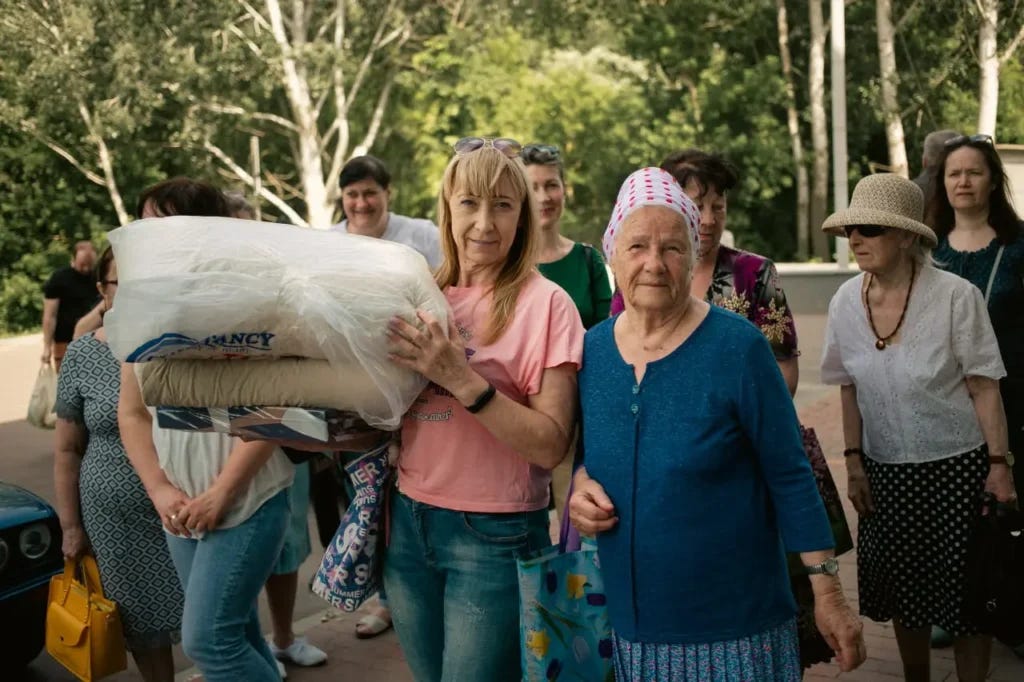Solidarity within the Unexploded Remnants of War
The anti-authoritarian resistance to Russian Imperialism and humanitarian mutual aid on the frontlines of eastern Ukraine
“If people are tired of this war, tell them to come and join the fight. People are fighting and struggling here, and people need help. This is not a video game.”
- Joy (Marcy - Yusef)
Berlin | We must stand in solidarity with resistance to Russian imperialist occupation in Ukraine, just as we have raised our fist against the Turkish imperialist occupation of Kurdistan and the Israeli imperialist occupation of Palestine, Lebanon and Syria.
Rather than get caught up in conspiratorial geopolitical madness and defeatist political inaction - lets fight together across Europe and the United Kingdom for a radical direct action in Ukraine that combines armed resistance against occupation with mutual aid to those who continue to live in ‘zero’ - an active battlefield.
This call for solidarity comes from the former lines of the Russian occupation in the east of Berlin, almost 2000km from the front line in the Kharkiv Oblast. Solidarity Collectives are a group that supports anti-authoritarian armed resistance and mutual aid in Ukraine and have documented their efforts from the full-scale invasion in 2022.
For those like me who are not on this front line, solidarity begins with listening…
In the darkness demanded for survival, an old man speaks to volunteers in Kupyansk following the retreat of the Russian army.
“They attacked here, first with airstrikes, bombing the area,” he tells the volunteers. “They dropped bombs here - I still have some in my garden.”
“And did the animals survive?” the volunteers ask. “You see you were putting yourself at risk…”
“I let them go when the Russians forced me to evacuate at gun point… a missile hit the yard, and the garage and the barn burnt down. The ducklings burnt to death… but the chickens managed to survive… people left everything behind. Many people lost their legs because of the ‘Lepestok’ mines.”
“Clearing the gardens of mines?” he is asked.
“Sometimes by accident,” he replies. “Most of them lost their legs and a lot of de-miners blown themselves up here.”
The ‘Lepestok’ (PFM) mine is a scatterable munition that is identifiable by its green, petal shape and are usually timed to explode. Ukraine has inherited millions of these small mines from the Soviet Union and destroyed at least half of them under efforts lead by the International Campaign to Ban Landmines. During the full-scale invasion, the Russian occupation has been documented using these mines around hospitals and in residential areas.
“I remember these petals scattered all over the hospital,” a medical worker at Izyum Central Hospital told Human Rights Watch (HRW). During the Russian occupation of Izyum, the Russian army set up a field hospital within the central hospital to treat their own wounded. At one point, there were only seven members of staff for Ukrainian patients.
“I heard a slam in the sky,” a neighbour to the hospital reported to HRW. “Previously I knew that if a cluster munition explodes above our heads, the submunition would go over us because of inertia. Because of where they were, I understood they would fall on us. So I told my wife and we went to hide in the basement.”
“But there was no explosion. And our neighbour said: ‘Have a look, a petal on the ground.’”
Read the full article published 9th May 2025;

